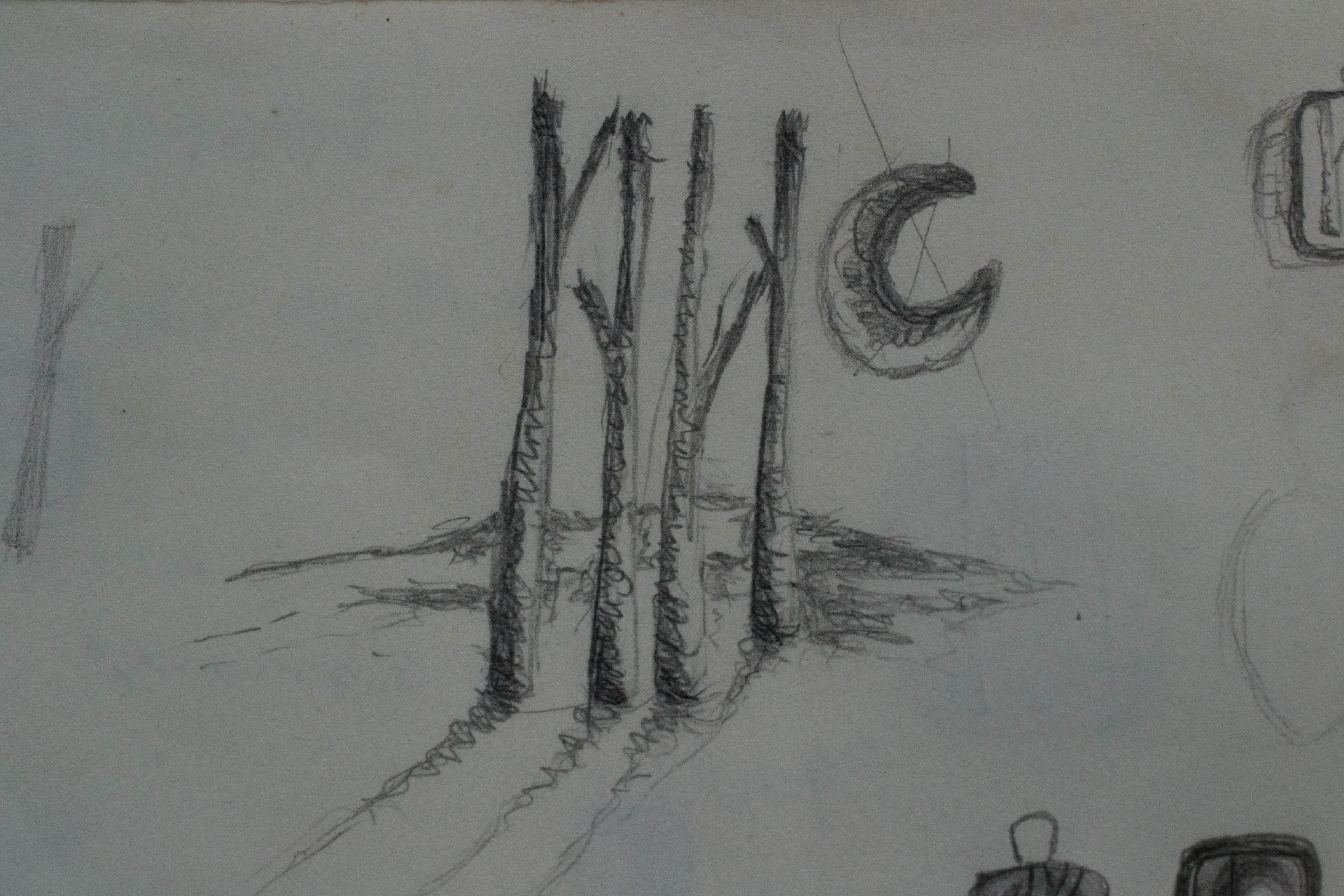The idea of it.
Some creative ideas are hard won, a small journey of design and re-design. Some come easily, arriving as if I have popped a bubble floating in mid air.

Ideas like this come almost fully formed. The best ideas are a mixture of both I suspect.
One idea can spark another and as I am making I am often scribbling notes or sketches of related pieces. Useful when making a collection. It seems I also have moments where the ideas come non stop, (though many are ultimately dismissed). Followed by a calm quiet and then a worrisome silence as I worry my brain is now emptier and echoing more than ever/(usual)! An exercise in trust of my natural process. (Don’t panic brain you will have another idea… Eventually.)

Each idea for me follows a different path to arrival. One this month took me by surprise. It’s appearance seemed arbitrary. I had been feeling lazy and easily distracted and yet here it was in spite of (or because of?) my absentmindedness.
That one idea
Many makers and artists choose similar subjects – The natural world is a popular theme for obvious reasons.

The belief that furrows a makers brow that there are no completely original ideas or thoughts seems true and sad. Although we can not escape that each and every one of us is influenced much more than we think (or realise) by our external world. It is inescapable, done consciously or not. Actually though, how you express those ideas are (and should be) of your own making. To know where (and why) you lay your idea foundations is the most important thing.
Every hand that makes and each mark made is an indelible mark of origin.

It might be a familiar subject (I could name you six jewellers who make fox pieces), but each idea made solid, will be a like a fingerprint. That is why it can be easy to spot copies without the authenticity. The second-hand piece is much somehow more ‘flimsy‘, the design a little to similar, a shadow, a photocopy of the original formed by (over) study of another.

The question of ideas
It made me wonder about the origin of where ideas might come from and how they are formed. Is there a route or a pattern? a place where they belong? a time when they might most happen?
Turns out there isn’t. What I found out from reading various articles and binge watching Ted talks was that there is no specific place in the brain where creativity comes from.

There are a variety of mental processes, none can be pinpointed to one location in the brain. Or a way of thinking. Each time you think creatively about anything it comes from a different place.
“Even in the wilderness that is human thinking, creative ideas seem to be deliberately designed to defy empirical inquiry.” (Arne Dietrich, psychologist)
There are no rules. You can be working hard or not working at all. You can have rules (think Dr. Seuss limiting himself to the challenge of 50 words in Green Eggs and Ham) or no limitations. You can be doing something unusual or routine, running, sleeping, daydreaming, knife throwing. Whatever works for you.

Of everything I read this I think was my favourite thing I found, “Creativity is intelligence having fun” (Albert Einstein)
Despite the creative ‘place’ remaining elusive there is one thing I do know what I want from my ideas: An emotional connection, storytelling, sparks of a memory, a feeling, a wonder, a fineness to my pieces. I would like to be the best at what I do which keeps my momentum moving forwards and sustains each new make.
One thing is certain; the more you trust your own creative voice and ideas the bigger it will grow.

Tony Brown
What strikes me is that with what we might call authentic/original art, there is always a driving force of some kind: first, the artist is (self) driven to produce something; stories, poetry, music, artefacts, a standup comedy sketch, a new website,… and second, production is accompanied by an internal dialogue (though not necessarily in words) that includes explorations of feelings of satisfaction/dissatisfaction in relation to the original idea: is it authentic? is it skilfully executed? does it represent my original idea sufficiently well? does it please/satisfy me?
On the path to completion, the work and the play that the artist undertakes is largely hidden from others. This (often hidden) preparatory activity can make the artist’s work seem quite magical.
elbyjewellery
Yes! That internal dialogue is most definitely accurate. That hidden prep work – can be tricky to manage in a world where small business relies so heavily on social media governed by algorithms and an expectation of output. Love what you have written – really interesting to think of those drive, dialogue and prep – thanks Tony. x